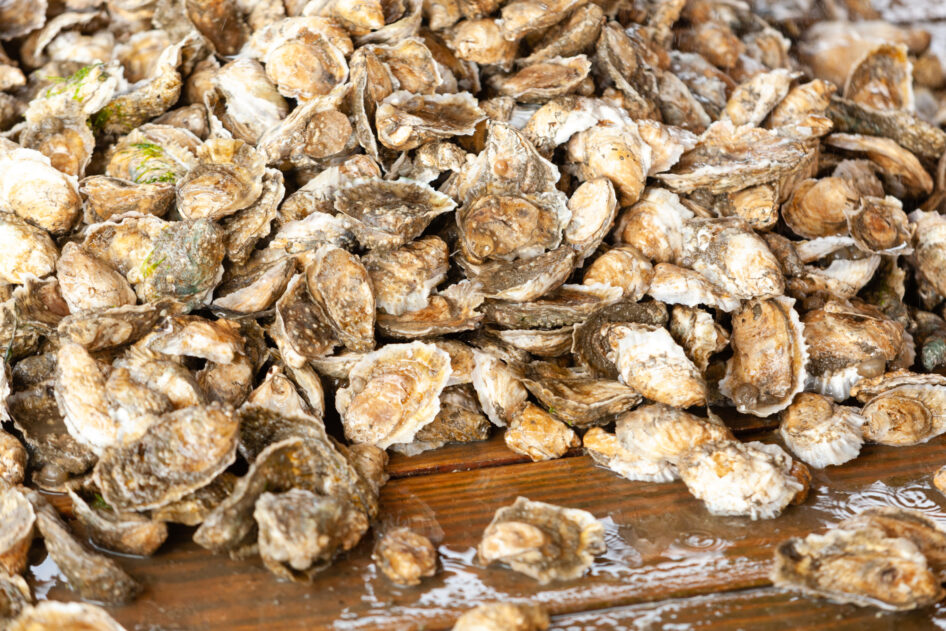How Does an Oyster Filter Water?

An adult oyster can filter up to 5 liters or 1.3 gallons of water an hour. That’s equal to 30 gallons per day, for just one oyster! Historically, oysters could filter the Chesapeake Bay’s entire water volume in less than a week. Today, with 1% of the oyster population left in the Chesapeake Bay, it would take oysters nearly a year.
So how do oysters do it?
Oysters are filter feeders, meaning they eat by pumping large volumes of water through their body. Water is pumped through the oyster’s gills by the beating of cilia. Plankton, algae and other particles become trapped in the mucus of the gills. From there these particles are transported to the oyster’s mouth and esophagus to be eaten, then to the stomach to be digested.
Once the oyster removes all nutrients, indigestible material is expelled as feces through the anus. This waste trails away from the oyster in a string, waving in the current of water that is flowing out of the oyster. Eventually the string breaks off and settles to the bottom, followed by more strings.
The oyster also produces an interesting waste called pseudofeces. Pseudofeces is unwanted material, like silt, that the oyster chooses not to eat, that gathers next to the gills and is expelled from the oyster’s shell via a rapid closing of the valves.
The expelled particles swirl through the water and resemble a puff of smoke. These puffs of smoke are an indication that oysters are filtering the water and doing what they are meant to do.
How Can I Teach About Oysters?
Now that you know a little bit about oysters and how they filter water, share the knowledge with your students! Here are some resources and lesson plans to help you do so:
- Particulate Matters: Filtering Mechanism Laboratory – This dissection exercise from the Maryland Sea Grant utilizes dye to allow students to see how an oyster is able to filter materials from the environment and selectively process them as food or pseudofeces.
- Hunting for Hemocytes: Forms Function, and Microscope Techniques – This lesson from the Maryland Sea Grant can be paired with the Particulate Matters lesson to expand on student microscope techniques and learn more about oysters.
- Amazing Oyster – Younger students can learn about oysters through this lesson that helps them build a 3-D oyster pop-out reef!
- Oystering on the Chesapeake Explorations 1-5 and Explorations 6-10 - Oystering on the Chesapeake, from the Chesapeake Bay Maritime Museum, offers teachers’ multi-disciplinary lesson plans to introduce students in grades 4 through 6 to the economic, environmental, and cultural significance of the oystering industry. Whatever lessons within the curriculum unit you choose, your students are sure to enjoy this exploration about the region’s oyster industry and the challenges facing the industry today.
- Elementary, Middle, and High School Oyster Units - The lessons are an introduction for educators to creating three-dimensional learning activities for their students that incorporates the K-12 Framework for Science Education with connections to Common Core, and the Maryland Environmental Literacy Standards.
- Time-lapse: Oysters Filtering Water – This 44 second time-lapse video shows oysters filtering a tank of water.
Please refer to Bay Backpack’s searchable teacher resources section for more oyster-related lesson plans
